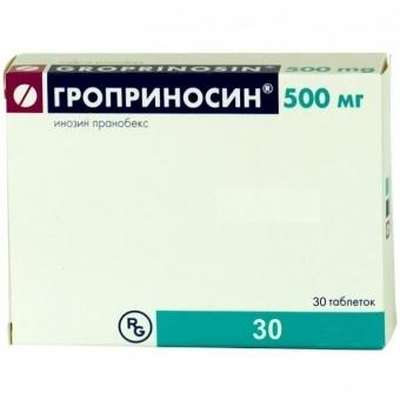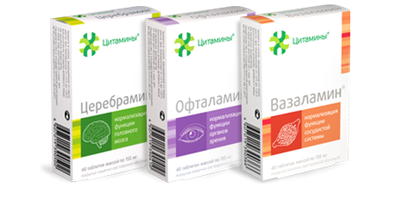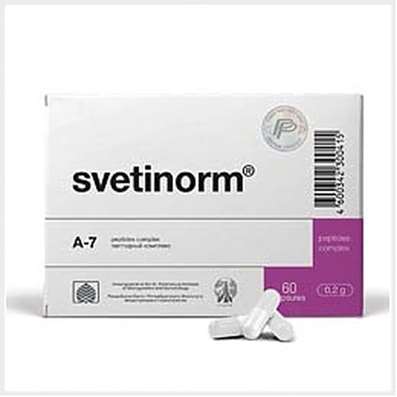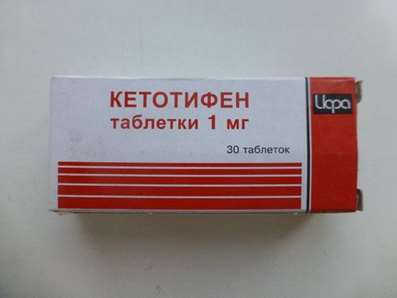Instruction for use: Levodopa Benserazide-Teva
I want this, give me price
Dosage form: tablets
Active substance: Levodopa + Benserazide*
ATX
N04BA Dopa and its derivatives
Pharmacological groups:
Antiparkinsonian means combined (dopamine precursor + decarboxylase aromatic L-amino acids peripheral inhibitor) [Dopaminomimetics in combinations]
An antiparkinsonian drug combined (dopamine precursor + decarboxylase aromatic L-amino acids peripheral inhibitor) [Antiparkinsonics in combinations]
The nosological classification (ICD-10)
G20 Parkinson's disease: A trembling paralysis; Idiopathic Parkinsonism; Parkinson's disease; Symptomatic Parkinsonism
Composition
Tablets - 1 table.
Active substances:
Levodopa 100/200 mg
Benserazide 25/50 mg
Corresponds to benserazide hydrochloride - 28.5 / 57 mg
Auxiliary substances: mannitol - 89.15 / 178.3 mg; MCC - 4.95 / 9.9 mg; Starch corn pregelatinized - 18.7 / 37.4 mg; Calcium hydrophosphate (anhydrous) - 7.97 / 15.94 mg; Povidone - K25 11/22 mg; Crospovidone (type A) - 8.25 / 16.5 mg; Silicon dioxide colloidal - 0.71 / 1.42 mg; Iron dye red oxide (E172) - 0.27 / 0.54 mg; Magnesium stearate - 5.5 / 11 mg
Description of dosage form
Dosage of 100 mg + 25 mg: round, biconvex tablets of pink color with light marble, with a cross-shaped risk on both sides.
Dosage 200 mg + 50 mg: round, flat tablets with a bevel of pink color, with light marble. On both sides of the tablet is a cruciform risk. On one side - engraving "B" and "L" in two sections of the cruciform risks.
Pharmachologic effect
Mode action - antiparkinsonian.
Pharmacodynamics
Levodopa / benserazide is a combined anti-Parkinsonian drug containing a dopamine precursor and an inhibitor of peripheral decarboxylase of aromatic L-amino acids. With parkinsonism, the neurotransmitter dopamine is formed in the basal nucleus in insufficient quantities. Substitution therapy is carried out using levodopa, a direct metabolic precursor of dopamine. Most of levodopa is converted to dopamine in peripheral tissues (intestines, liver, kidneys, heart, stomach), which does not participate in the implementation of the antiparkinsonian effect, since peripheral dopamine does not penetrate badly through the BBB, and is responsible for most of its undesirable reactions. Blocking extracerebral decarboxylation of levodopa is highly desirable. This is achieved by the simultaneous administration of levodopa and benserazide, an inhibitor of the peripheral decarboxylase of aromatic L-amino acids, which reduces the formation of dopamine in peripheral tissues, which indirectly leads to an increase in the amount of levodopa entering the central nervous system, on the one hand, and to a decrease in the manifestations of undesired reactions of levodopa other. The combination of these substances in a ratio of 4: 1 has the same efficacy as levodopa in high doses.
Pharmacokinetics
Suction. Levodopa and benserazid are absorbed mainly in the upper parts of the small intestine. Tmax for oral administration is approximately 1 hour. AUC and Cmax are in proportion to the dose. Absorption depends on the rate of evacuation of the contents of the stomach and the values of intragastric pH. The presence of food in the stomach slows down absorption. When levodopa is used after a regular meal Cmax levodopa in plasma is 30% smaller and is reached later. The degree of absorption is reduced by 15%. In large quantities is contained in the small intestine, liver and kidneys, only about 1-3% penetrates the brain. T1 / 2 - 3 hours.
Distribution. Levodopa passes the BBB by means of a saturated transport system. It does not bind to plasma proteins. Vd - 57 liters. AUC of levodopa in the cerebrospinal fluid is 12% of that in plasma.
Unlike levodopa, benserazid does not penetrate the BBB. It accumulates mainly in the kidneys, lungs, small intestine and liver and penetrates the placental barrier.
Metabolism. Levodopa is metabolized mainly by two basic (decarboxylation and o-methylation) and two additional routes (transamination and oxidation). Decarboxylase of aromatic L-amino acids converts levodopa into dopamine. The main end products of this metabolism pathway are homovaniline and dihydroxyphenylacetic acids. Catechol-o-methyl transferase methylates levodopa to form 3-o-methyldopa. T1 / 2 of this main metabolite is 15 hours, and in patients receiving therapeutic doses of the drug, its accumulation takes place. Reduction of the peripheral decarboxylation of levodopa, if the latter is used together with benserazide, resulting in higher plasma concentrations of levodopa and 3-O-methyldopa and lower concentrations of catecholamines (dopamine, norepinephrine) and fenolkarboksilnyh acid (homovanillic acid, digidrofeniluksusnaya acid). In the mucous membrane of the intestine and liver, benserazide is hydroxylated to form trihydroxybenzylhydrazine. This metabolite is a potent inhibitor of decarboxylase of aromatic L-amino acids.
Excretion. On the background of peripheral inhibition of decarboxylase of aromatic L-amino acids T1 / 2 levodopa 1.5 hours Clearance of levodopa from plasma - 430 ml / min. Benserazide is almost completely eliminated by metabolism. Metabolites are excreted mostly by the kidneys (64%) and to a lesser extent by the intestine (24%).
Cumulation. Absolute cumulation of levodopa in combination with benserazide averages 98% (from 74 to 112%).
Pharmacokinetics in specific patient groups
Renal insufficiency. Less than 10% of unchanged levodopa / benserazide are excreted by the kidneys, so patients with mild to moderate renal failure do not need a dose adjustment.
In elderly patients (65-78 years) with Parkinson's disease. T1 / 2 and AUC of levodopa are increased by 25%, which is not a clinically significant change.
Indications for Levodopa / Benserazide-Teva
Parkinson's disease.
Contraindications
Hypersensitivity to levodopa, benserazid or any other component of the drug;
Severe disruption of the endocrine system;
glaucoma;
Severe liver dysfunction;
Severe renal dysfunction;
Severe impairment of CAS function;
Endogenous and exogenous psychoses;
Simultaneous administration with non-selective MAO inhibitors, a combination of MAO type A and MAO type B inhibitors (equivalent to nonselective MAO inhibition);
Women of childbearing age who do not use reliable methods of contraception;
pregnancy;
The period of breastfeeding;
Age up to 25 years.
Application in pregnancy and breastfeeding
The drug Levodopa / Benserazid-Teva is contraindicated in pregnancy and women of childbearing age who do not use reliable methods of contraception. If the pregnancy is suspected, the drug should be immediately discontinued.
If it is necessary to take the drug, breastfeeding should be discontinued, since it is impossible to exclude the development of a skeleton in a child.
Side effects
The frequency of unwanted reactions is classified according to the following criteria: very often - not less than 10%; Often - not less than 1% and less than 10%; Sometimes - not less than 0.1% and less than 1%; Rarely - not less than 0.01% and less than 0.1%; Very rarely - less than 0.01%, including single messages.
From the hemopoietic system: very rarely - hemolytic anemia, transient leukopenia, thrombocytopenia.
From the side of the nervous system: often - headache, dizziness, convulsions, spontaneous movement disorders (such as chorea and athetosis), episodes of hardening, weakening of the effect by the end of the period of the dose, the phenomenon of on-off, increasing manifestations of restless legs syndrome; Very rarely - severe drowsiness, episodes of sudden drowsiness.
Mental disorders: rarely - agitation, anxiety, depressed mood, insomnia, delirium, aggression, depression, anorexia, mild rapture, pathological gambling addiction, hypersexuality, increased libido; Very rarely - hallucinations, temporary disorientation.
On the part of the CVS: very rarely - arrhythmias, orthostatic hypotension (weakening after a decrease in the dose of the drug), an increase in blood pressure; Frequency is unknown - hot flashes.
On the part of the digestive system: very rarely - nausea, vomiting, diarrhea, individual cases of loss or changes in taste, dryness of the oral mucosa; Frequency unknown - gastrointestinal bleeding.
From the skin and subcutaneous tissues: rarely - skin itching, rash.
On the part of laboratory indicators: infrequent - transient increase in hepatic transaminase activity, alkaline phosphatase, increased bilirubin concentration, increase in urea and creatinine in the blood, change in urine color to red, darkening when standing.
Other: frequency unknown - febrile fever, increased sweating.
Interaction
Pharmacokinetic interactions
With the simultaneous use of trihexyphenidyl (m-holinoblokator), the rate decreases, but not the degree of absorption of levodopa.
Iron sulfate reduces Cmax and AUC of levodopa by 30-50%; These changes in some cases are clinically significant.
With simultaneous use with antacids, the degree of absorption of levodopa / benserazide is reduced by 32%.
Metoclopramide increases the rate of absorption of levodopa.
Pharmacodynamic interactions
Neuroleptics, opioids and antihypertensives containing reserpine suppress the action of levodopa / benserazide. If necessary, use the lowest dose of these drugs.
With simultaneous use, pyridoxine can reduce the antiparkinsonian effect of levodopa / benserazide.
Levodopa / benserazide should not be used with nonselective MAO inhibitors. If it is necessary to use levodopa / benserazide in patients receiving irreversible non-selective MAO inhibitors, at least 2 weeks should pass after the discontinuation of the MAO inhibitor is taken. Premature (within 2 weeks after cancellation) the use of levodopa / benserazide behind a nonselective MAO inhibitor (eg tranylcypromine) can cause a hypertensive crisis.
Selective MAO inhibitor type B (including selegiline, rasagiline) and selective MAO inhibitors type A (moclobemide) can be used against the background of levodopa / benserazide treatment. In certain cases, selegilin can increase the effect of levodopa / benserazide without causing dangerous interactions. It is recommended to adjust the dose of levodopa / benserazide depending on the individual patient's need for therapeutic effectiveness and tolerability.
The combination of selective inhibitors of MAO type B and selective MAO inhibitors of type A is equivalent to the use of a non-selective MAO inhibitor, so a similar combination should not be used with levodopa / benserazide.
If it is necessary to use antihypertensive drugs against the background of levodopa / benserazide treatment, it is necessary to take into account the possibility of developing orthostatic hypotension.
Levodopa / benserazid potentiates the action of sympathomimetics (epinephrine, norepinephrine, isoproterenol, amphetamine), so do not use this combination of drugs. If simultaneous reception is still mandatory, you should carefully monitor the status of the CAS and, if necessary, reduce the dose of sympathomimetics.
It is possible to use levodopa / benserazide with other antiparkinsonian drugs (anticholinergics, amantadine, dopamine receptor agonists), and not only desirable but also undesirable effects can be intensified. It may be necessary to reduce the dose of levodopa / benserazide or another drug. When levodopa / benserazide is used concomitantly with a catechol-O-methyltransferase inhibitor, a dose reduction of levodopa / benserazide may be required.
Since the patient receiving levodopa / benserazid during the halothane anesthesia may experience fluctuations in blood pressure and arrhythmia, it is necessary to cancel taking the drug 12-48 h before surgery.
Protein-rich foods can reduce the therapeutic effect of levodopa / benserazide.
Levodopa / benserazid can affect the results of laboratory studies of catecholamines, creatinine, uric acid, glucose, alkaline phosphatase, bilirubin. An increase in the concentration of urea and creatinine in the blood, a false negative reaction to glucose in the urine with the glucose oxidase method, a false positive result of Coombs test can be determined.
Dosing and Administration
Inside, if possible not less than 30 minutes before or 1 hour after meals.
Treatment begins with a small dose, gradually increasing the dose for each patient individually, until the therapeutic effect is achieved. It is necessary to avoid high doses for simultaneous reception of the drug.
The following instructions on the dosage regimen should be considered as general recommendations.
For patients who have not previously taken levodopa, an initial dose of 50 mg of levodopa / 12.5 mg of benserazide is administered 2-4 times a day (from 100-200 mg of levodopa / 25-50 mg of benserazide per day). With good tolerability, the dose is increased by 50-100 mg of levodopa / 12.5-25 mg of benserazide every 3 days until a therapeutic effect is achieved.
Further (after the initial) dose selection is carried out at a frequency of 1 time per month. Usually the therapeutic effect is noted already with the intake of 200-400 mg of levodopa / 50-100 mg of benserazide per day.
The maximum daily dose is 800 mg of levodopa / 200 mg of benserazide.
The daily dose should be divided into 4 or more receptions. Frequency of receptions should be distributed so that to provide optimum therapeutic effect.
If unwanted reactions occur, either stop the dose increase or reduce the daily dose.
The optimal therapeutic effect is achieved, as a rule, when taking 300-800 mg of levodopa / 100-200 mg of benserazide.
Patients who had previously taken levodopa, taking Levodopa / Benserazid-Teva should be started 12 hours after discontinuation of Levodopa.
The dose of the drug should be approximately 20% of the previous dose of levodopa in order to maintain the therapeutic effect that has already been achieved. If necessary, the dose increases according to the scheme described for patients who have not previously taken levodopa.
In patients who had previously taken levodopa in combination with an aromatic L-amino acid decarboxylase inhibitor, Levodopa / Benserazid-Teva should be taken 12 hours after discontinuation of levodopa in combination with an aromatic L-amino acid decarboxylase inhibitor. In order to minimize the decrease in the therapeutic efficacy already achieved, it is necessary to stop the previous therapy at night and start taking Levodopa / Benserazid-Teva the next morning. If necessary, the dose increases according to the scheme described for patients who have not previously taken levodopa.
Patients who had previously taken other antiparkinsonian drugs, taking Levodopa / Benserazid-Teva is possible. As soon as the therapeutic effect of Levodopa / Benserazid-Teva becomes apparent, it is necessary to revise the treatment regimen and reduce or cancel the alternative drug.
Dosage regimes in special cases
Patients who experience severe motor fluctuations are advised to take a daily dose more than 4 times a day without changing the daily dose itself.
In the elderly, the dose increase should be slower.
Experience in children and adolescents is limited.
With renal and hepatic insufficiency of mild and moderate severity, dose correction is not required.
When there are spontaneous movements such as chorea or athetosis in later stages of treatment, it is necessary to reduce the dose.
With prolonged use of the drug, the appearance of episodes of solidification, the weakening of the effect at the end of the period of action of the dose and the phenomenon of on-off can be eliminated or significantly reduced by reducing the dose or using the drug in a smaller dose, but more often. Subsequently, you can re-increase the dose to enhance the effect of treatment.
When there are undesirable reactions from the CVS, it is necessary to reduce the dose.
Special instructions
Undesirable reactions from the gastrointestinal tract, possible at the initial stage of treatment, are largely eliminated if you take Levodopa / Benserazid-Teva with a small amount of food or liquid, as well as a slower increase in the dose. It is not recommended to use Levodopa / Benserazid-Teva for the treatment of iatrogenic extrapyramidal syndrome and Huntington's chorea.
Patients who have a history of information on gastrointestinal ulcers, convulsions and osteomalacia, it is necessary to regularly monitor the relevant indicators. During the treatment should monitor the indicators of liver function, kidneys, blood formula. In patients who have a history of coronary heart disease, myocardial infarction, heart rhythm disturbances, it is necessary to regularly monitor ECG.
Patients who have an orthostatic hypotension in an anamnesis should be under medical supervision, especially at the beginning of treatment.
Patients with diabetes should often monitor the concentration of glucose in the blood and adjust the dose of oral hypoglycemic drugs.
When using the drug Levodopa / Benserazid-Teva reported cases of sudden onset of sleep. Patients should be informed about a possible sudden falling asleep.
When using the drug Levodopa / Benserazid-Teva, the risk of developing malignant melanoma increases, and therefore the use of the drug in patients with malignant melanoma, incl. In the anamnesis is not recommended. The use of Levodopa / Benserazid-Teva, especially in high doses, increases the risk of developing compulsive disorders.
Before general anesthesia, Levodopa / Benserazid-Teva should be taken as long as possible. An exception is halothane anesthesia. Since the patient receiving the drug during the halothane anesthesia may experience fluctuations in blood pressure and arrhythmia, the drug should be withdrawn 12-24 hours before the surgery. After the operation, the treatment is resumed, gradually increasing the dose.
The drug Levodopa / Benserazid-Teva can not be abruptly abolished. Abrupt cancellation of the drug can lead to withdrawal syndrome (fever, muscle stiffness, as well as possible mental changes and increased activity of CK in the blood serum) or akinetic crises that can take a life-threatening form. If such symptoms occur, the patient should be under the supervision of a doctor (if necessary, should be hospitalized) and receive appropriate therapy, which may include the repeated use of the drug Levodopa / Benserazid-Teva.
Depression can be a clinical manifestation of the underlying disease (Parkinsonism) and may also occur when treated with Levodopa / Benserazid-Teva. Such patients should be under the supervision of a physician for the timely detection of mental undesirable reactions.
Some patients with Parkinson's disease noted the appearance of behavioral and cognitive disorders as a result of uncontrolled use of increasing doses of the drug, despite the doctor's recommendations and a significant increase in therapeutic doses.
The experience of using Levodopa / Benserazid-Teva under the age of 25 is limited.
Influence on the ability to manage transport and work with machinery. Patients who experience excessive daytime sleepiness or sudden episodes of sleep need to give up driving or working with machinery. If these symptoms appear during treatment with Levodopa / Benserazid-Teva, you should consider reducing the dose or canceling therapy.
Release form
Tablets 100 mg + 25 mg, 200 mg + 50 mg. By 20, 30, 50, 60 or 100 tablets. In a vial of HDPE with a screw cap made of polypropylene containing silica gel and equipped with a first-opening control system. 1 fl. Placed in a cardboard box.
Manufacturer
Pharmaceutical Plant Teva Pravet Co. Ltd., Pallagi 13, H-4042, Debrecen, Hungary.
Legal entity in whose name the registration certificate was issued: Teva Pharmaceutical Enterprises Ltd., Israel.
Conditions of leave from pharmacies
On prescription.
NPS-RU-00013-DOK-PHARM-23072016
Storage conditions of the drug LevodopaBenserazide-Teva
In a dry place at a temperature of no higher than 25 ° C.
Keep out of the reach of children.
Shelf life of the drug LevodopaBenserazide-Teva
3 years.
Do not use after the expiry date printed on the package.

 Cart
Cart





